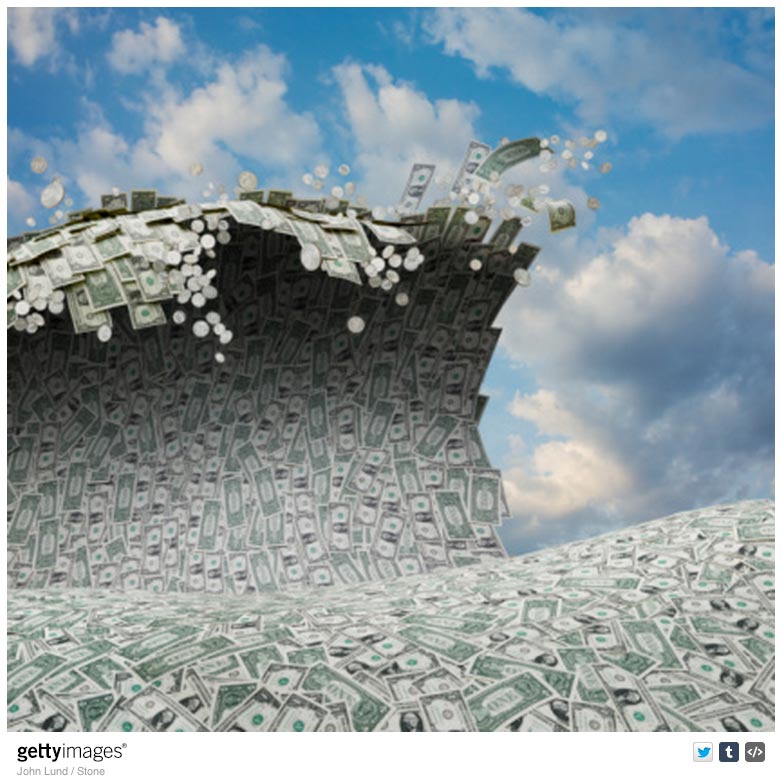In 1994, Pizza Hut made history by becoming the first website to offer online pizza ordering. Initially catering exclusively to Santa Cruz, California, this milestone marked the inception of online payments. Thus, e-commerce was born.
Two decades later, consumers effortlessly input their credit card information into web browsers without hesitation, a testament to the safety, security, and convenience of online transactions. This trend has led to exponential growth year after year, with consumers spending unprecedented amounts online.

E-commerce growth has been staggering, turning the retail world upside down as brick-and-mortar stores close due to showrooming and online competition.
Behind closed doors, major retailers are strategizing to survive this "common enemy" - the radical shift in consumer buying behavior. I'd describe it as the next gold rush – immense opportunities for those who adapt quickly.
Here are my predictions on e-commerce's future trajectory:
Marketplaces For X
We'll see an influx of new product and service marketplaces across verticals like home services, entertainment, travel, and more. Investors will heavily back these "mobile mammoth marketplace" plays.
Shopping Mall Struggles
As national chains shutter physical locations to focus online, mall vacancies will soar. This could force repurposing as delivery/pickup hubs, pop-up experiences, or mixed-use spaces.
Shopping Malls Servicing Stores
Online marketplaces offer tools and services for their retailers to sell more products online, shopping malls need to follow suit to compete. That could include marketing services, collaborated events or sales, and providing whatever services their store owners require (shipping fulfillment for all stores in the mall?)
Grocery/Beauty Goes Online
Major grocery and beauty brands will enable online ordering for their products with local delivery networks to compete with e-commerce.
Influx of Delivery Providers
New shipping providers in the delivery space. UPS, Fedex, DHL, etc., will be unable to handle the volume of same day delivery. We’ll see more options for local couriers/delivery companies and major retailers partnering with these providers to fulfill orders within hours of purchase. Companies can start to strategically place popular selling items throughout different areas of the city for quicker delivery times. This won’t work well for rural areas, but more applicable for major cities. Bikes + smart cars for the next 5 years. By 2025, we’ll see self driving delivery vehicles (drones + self driving cars).
Mobile Shopping Companions
Retailers will offer mobile apps to assist shoppers whether in-store or online - for pricing, inventory, collaborative wish-listing and more
Bufferbox for X
Bufferbox provides consumers the convenience of picking up their online purchases at kiosk locations, 24/7. We’ll start to see companies placing their lockerbox in strategic locations, and even within stores (Eg. -- Amazon lockerbox within Whole Foods).
Local Distribution As A Service
Brands and small businesses will work with local ambassadors to provide marketing distribution on retainer/affiliate lead basis. Think product placements with celebs, but instead using 100s of influential locals to reach your target audience. Youtube = the biggest ecommerce marketing channel ever.
User Generated Content = Gold
Brands will leverage customer photos, videos, and reviews as influential marketing and social proof driving purchases (integrating consumer generated photos and videos into your ecommerce and review pages).
Mobile Shopping Tools/Apps
Big chains will offer companion tools for on/offline shopping. This already happens today, but better tools for customers and business owners. Walk down the aisle with companion apps that can price check, read reviews, manage your shopping list and ask for help. Who’s going to make the best companion app where groups/family can collaborate on shopping lists?
Interactive Shops & Shopping Experiences
As shopping malls close, businesses work together to deliver new shopping experiences. In other words, new ways to attract customers and keep them in store/ on premise for as long as possible. Focus on building environments where people want to be seen and heard. That could be expensive decor (think Vegas casinos), live performers, cool hangout areas, live product keynotes for brands, and fashion shows.
These experiences are extended to online interactive showrooms that customers access via desktops, tablets, mobile devices, or gaming consoles. Each platform offers new ways for consumers to discover and interact with products. This could be as simple as google hangouts with your favorite shop, or choose your own shopping adventure (stores offering different layouts, themes to shop from, or even virtual shops).
Personalized Shopping Assistants
With integrated customer data, retailers can deploy sophisticated personal shopping tools like customized recommendations and targeted promotions, both on and offline.
Sustainability Prioritized
More focus on the environment and responsible packaging of goods and services. Socially responsible companies are rewarded with long term loyal customers. Look at Wholefoods or Lululemon.
Local Matters
Cities will nurture local entrepreneurship while businesses jointly promote community makers and stores.
City Halls compete to build entrepreneurial hubs (tax incentives, discounted rent, and support systems). Entrepreneurship is rewarded; locals want to support other locals. Food will pave the way (50 mile diet) and other verticals will follow. Businesses will collaborate to support each other with new types of marketing campaigns and local events.
Video Commerce
Video is the most powerful medium in the world. End-to-end from advertisements, product demos, purchase authorization, delivery confirmation, and customer support.
Live Video Shopping Channels
Brands offer live webinars where users can see new product lines and interact with makers. Think HSN (Home Shopping Network), but for big brands and marketplaces. Brands could run 24/7, or specific times during the day/week.
Popup Stores
Online businesses and marketplaces start popup stores in strategic locations (mall, conferences, events, etc). Indochino is a great example -- they tour cities across North America to showcase their product line and allow customers to get a personal fitting. We could see kickstarter style popup stores where new or potential product lines are tested/sold in short term locations.
These predictions showcase the impact e-commerce represented for transforming the retail landscape. Only time will tell what innovations actually take shape in the years ahead.
Where do you see the future? Let me know in the comments below